How To Discover A Planet: A Short Step-by-step Guide On How Each Of Our Planetary Neighbors Were Originally
How to Discover a Planet: A short step-by-step guide on how each of our planetary neighbors were originally discovered.
More Posts from Xyhor-astronomy and Others
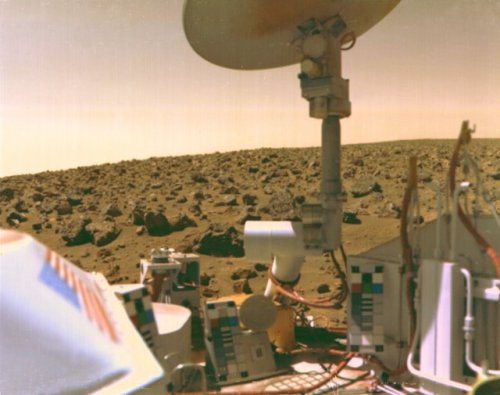
A boulder-strewn field of red rocks stretches across the horizon in this self-portrait of Viking 2 on Mars’ Utopian Plain. Viking 2 landed Sept. 3,1976, some 4,600 miles from the twin Viking 1 craft, which touched down on July 20.
Image Credit: NASA/JPL

Should there be a holiday called Astronomy Day?
Where lights are to be turned off for the entire night so everyone could see the stars?
Observing the Ozone Hole from Space: A Science Success Story
Using our unique ability to view Earth from space, we are working together with NOAA to monitor an emerging success story – the shrinking ozone hole over Antarctica.

Thirty years ago, the nations of the world agreed to the landmark ‘Montreal Protocol on Substances that Deplete the Ozone Layer.’ The Protocol limited the release of ozone-depleting chlorofluorocarbons (CFCs) into the atmosphere.

Since the 1960s our scientists have worked with NOAA researchers to study the ozone layer.

We use a combination of satellite, aircraft and balloon measurements of the atmosphere.

The ozone layer acts like a sunscreen for Earth, blocking harmful ultraviolet, or UV, rays emitted by the Sun.

In 1985, scientists first reported a hole forming in the ozone layer over Antarctica. It formed over Antarctica because the Earth’s atmospheric circulation traps air over Antarctica. This air contains chlorine released from the CFCs and thus it rapidly depletes the ozone.

Because colder temperatures speed up the process of CFCs breaking up and releasing chlorine more quickly, the ozone hole fluctuates with temperature. The hole shrinks during the warmer summer months and grows larger during the southern winter. In September 2006, the ozone hole reached a record large extent.

But things have been improving in the 30 years since the Montreal Protocol. Thanks to the agreement, the concentration of CFCs in the atmosphere has been decreasing, and the ozone hole maximum has been smaller since 2006’s record.

That being said, the ozone hole still exists and fluctuates depending on temperature because CFCs have very long lifetimes. So, they still exist in our atmosphere and continue to deplete the ozone layer.
To get a view of what the ozone hole would have looked like if the world had not come to the agreement to limit CFCs, our scientists developed computer models. These show that by 2065, much of Earth would have had almost no ozone layer at all.

Luckily, the Montreal Protocol exists, and we’ve managed to save our protective ozone layer. Looking into the future, our scientists project that by 2065, the ozone hole will have returned to the same size it was thirty years ago.
Make sure to follow us on Tumblr for your regular dose of space: http://nasa.tumblr.com

ON THIS DAY: An impressive impact crater on Mars, observed by NASA’s Mars Reconnaissance Orbiter, November 19, 2013. (NASA)

The missing links between galaxies have finally been found. This is the first detection of the roughly half of the normal matter in our universe – protons, neutrons and electrons – unaccounted for by previous observations of stars, galaxies and other bright objects in space.

Meteor impact craters of the world
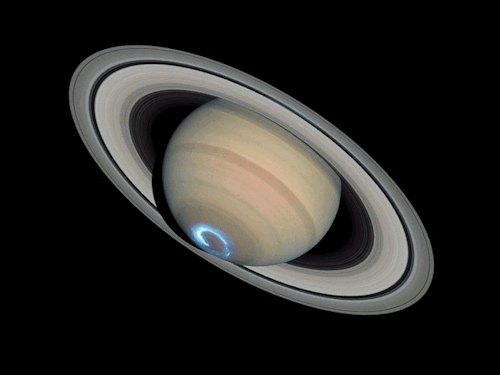
Sequence of images of auroras seen at the south pole of Saturn. Images combine visible and ultraviolet light.
Credit: NASA, ESA, J. Clarke (Boston University, USA), and Z. Levay (STScI)
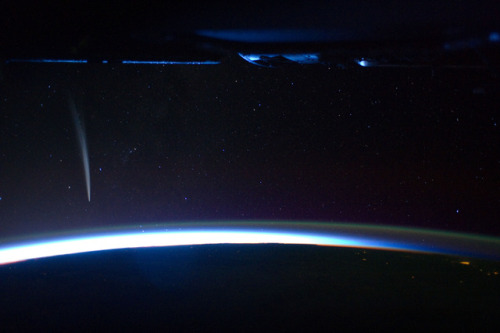
Comet Lovejoy is visible near Earth’s horizon in this nighttime image photographed by NASA astronaut Dan Burbank, Expedition 30 commander, onboard the International Space Station on Dec. 21, 2011.
Image credit: NASA
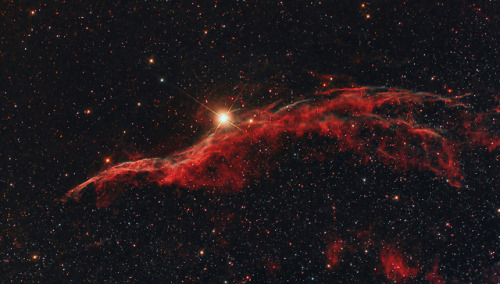
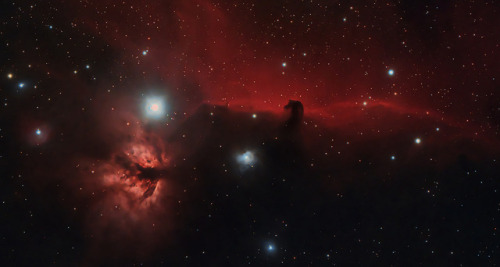
NGC 6960 (Western Veil nebula) & Horsehead Nebula and the Flame Nebula
by David Wills
-
 xyhor-astronomy reblogged this · 7 years ago
xyhor-astronomy reblogged this · 7 years ago -
 neoril reblogged this · 7 years ago
neoril reblogged this · 7 years ago -
 sorinkavglazy reblogged this · 7 years ago
sorinkavglazy reblogged this · 7 years ago -
 sorinkavglazy liked this · 7 years ago
sorinkavglazy liked this · 7 years ago -
 mugwomps reblogged this · 7 years ago
mugwomps reblogged this · 7 years ago -
 mugwomps liked this · 7 years ago
mugwomps liked this · 7 years ago -
 staneclectic reblogged this · 7 years ago
staneclectic reblogged this · 7 years ago -
 ssolson liked this · 7 years ago
ssolson liked this · 7 years ago -
 ineverwasgoingto reblogged this · 7 years ago
ineverwasgoingto reblogged this · 7 years ago -
 ineverwasgoingto liked this · 7 years ago
ineverwasgoingto liked this · 7 years ago -
 saucerkommand liked this · 7 years ago
saucerkommand liked this · 7 years ago -
 intelligentliving reblogged this · 7 years ago
intelligentliving reblogged this · 7 years ago -
 thebelcherkid liked this · 7 years ago
thebelcherkid liked this · 7 years ago -
 spaceandmints reblogged this · 7 years ago
spaceandmints reblogged this · 7 years ago -
 spaceandmints liked this · 7 years ago
spaceandmints liked this · 7 years ago -
 rjbailey reblogged this · 7 years ago
rjbailey reblogged this · 7 years ago -
 adolescentlimbo liked this · 7 years ago
adolescentlimbo liked this · 7 years ago -
 draconusumbra69 liked this · 7 years ago
draconusumbra69 liked this · 7 years ago -
 pixeghost liked this · 7 years ago
pixeghost liked this · 7 years ago -
 sanjerodo liked this · 7 years ago
sanjerodo liked this · 7 years ago -
 weberthewaffle reblogged this · 7 years ago
weberthewaffle reblogged this · 7 years ago -
 herkidalpaca reblogged this · 7 years ago
herkidalpaca reblogged this · 7 years ago -
 herkidalpaca liked this · 7 years ago
herkidalpaca liked this · 7 years ago -
 lucid-nova reblogged this · 7 years ago
lucid-nova reblogged this · 7 years ago -
 donwantstotravel reblogged this · 7 years ago
donwantstotravel reblogged this · 7 years ago -
 raphescoe liked this · 7 years ago
raphescoe liked this · 7 years ago -
 mikee778 liked this · 7 years ago
mikee778 liked this · 7 years ago -
 mikeyperes liked this · 7 years ago
mikeyperes liked this · 7 years ago -
 bbtree liked this · 7 years ago
bbtree liked this · 7 years ago -
 rjbailey liked this · 7 years ago
rjbailey liked this · 7 years ago -
 haz77zard liked this · 7 years ago
haz77zard liked this · 7 years ago -
 diseonfire liked this · 7 years ago
diseonfire liked this · 7 years ago -
 probablynotnasa reblogged this · 7 years ago
probablynotnasa reblogged this · 7 years ago -
 spaceexp reblogged this · 7 years ago
spaceexp reblogged this · 7 years ago
For more content, Click Here and experience this XYHor in its entirety!Space...the Final Frontier. Let's boldly go where few have gone before with XYHor: Space: Astronomy & Spacefaring: the collection of the latest finds and science behind exploring our solar system, how we'll get there and what we need to be prepared for!
128 posts